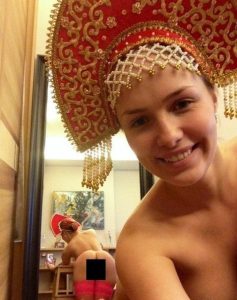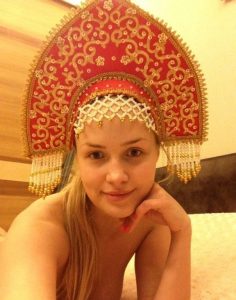When I am in not in India, I’m usually in NYC, and over the past year, most of my beloved bodegas have converted into smoke shops. For now, they are just selling CBD, but they are ready for the final laws to change that will allow them to start selling the good stuff legally. Walking my dog through a neighborhood, I hardly recognize anymore, and seeing how one plant could completely change a city got me thinking about hemp fabric in the textile industry. And, why it has been such a struggle for so many fashion brands to be able to use this sustainable cannabis plant for apparel.
So today, I am going to teach you all about the history of hemp, why it’s been so slow to adopt into the fashion industry despite it being quite sustainable, and how you can source hemp for your own conscious fashion collections.
BUT BEFORE WE GET STARTED…
I love helping startup brand founders succeed, so I created a bunch of free guides that will help you with your business.
They won’t be free forever, so make sure to grab them while you can.
WHAT YOU WILL LEARN
NO TIME TO READ? CHECK OUT THIS 60 SECOND SLIDE SHOW…
HISTORY OF HEMP FABRIC

Hemp has always played a huge role in civilizations, dating as far back as the pyramids. From helping ancient Egyptians split boulders to forming ropes that hoisted materials, it was crucial to society’s progress. Hemp fabric is also one of the oldest known textiles fibers dating back to China in 10,000 BC. It has been around THAT long.
And, hemp wasn’t just used for ropes and textiles – the list continues and is long. Anything from sails for ships, army outfits, medicine, and European cooking (today we have the omega-rich hemp hearts sold at Whole Foods and health stores) – you get the idea. Hemp is extremely versatile, and this hasn’t changed. Its long staple fiber length allows it to remain tough, hence its historic use on boats that would permit sailing across the seas. And yet, at the end of its (usually long) life, this eco fibre can biodegrade right back into the soil.
This use of hemp spread from East Asia to Europe, eventually making its way to South America via Spanish settlers. There was an attempt for the plant to continue being cultivated upwards into North America, and for a while, it was thriving. But, this was halted in the United States once a tax on cannabis was enacted. Many theories exist, including that of competing industries potentially being negatively affected by hemp production. Those industries may have had an influence on its demise, but we’ll never really know the whole story.
Even after the removal of the tax, hemp cultivation was never the same. Because by the time hemp finally became legal, the emergence of synthetic fibres had taken over.
LEGALITIES THAT CREATE HEMP PRODUCTION BARRIERS

You might be wondering what could possibly make a textile illegal. Especially one that is so sustainable.
Well, hemp does come from the Cannabis sativa plant. Yup, that’s the same plant that also produces marijuana cigarettes (yes, that’s a Sublime reference – click here to listen to my hemp playlist while you read the rest of this article).
And, as you probably already know, anything cannabis automatically carries along with it a big no-no warning sign, that could even land you in jail, in some countries.
But, here is the thing – all cannabis plants are not the same. There are actually different strains for fashion vs. plants for recreational drugs. The industrial hemp strain that creates textiles has very low levels of THC, (read, not good for smoking), and it actually results in much stronger material than other cannabis varieties, that might be favored by, say, Snoop Dog.
Unfortunately though, at the end of the day, in the eyes of many countries’ governments, these alternative textile strains of cannabis are still cannabis, and they are banned just like the variety that is used to make drugs.
Lame, I know.
But there is hope.
The biggest focus surrounding the debate for the legalization of at least the textile variety of cannabis plant is the level of delta-9-tetrahydrocannabinol (THC, aka the stuff that gets you high). The argument is if the THC is so low, there is technically no drug in the plant. So why can’t it be legal for fabric production?
Well, depending on where you are, this low level of THC is not so clear cut, and its number varies tremendously.
WHERE IS HEMP LEGAL?

When importing hemp, you’ll need to be diligent because the rules for every country are different.
That being said, this article does not serve as any type of legal advice. It is just a head start to your hemp research.
This 137 page report is a great guide to the legalities of hemp production in countries including – Australia, Brazil, Canada, China, Colombia, Ecuador, the European Union, Great Britain, India, Israel, Italy, Japan, Mexico, New Zealand, and Russia.
While there are nuances to legalities around the world, the report provides specifics of where industrial hemp (i.e., hemp used for manufacturing clothing) is legal. This includes specifics on the % of legal THC and other key details.
China is, above all, the #1 producer of hemp, with over two thirds of the world’s hemp originating from this part of the globe.
What you might notice quickly is that the United States is not in these reports. That’s because we are new to the hemp game, even though the US is currently one of the top 3 hemp producers.
It wasn’t until 2014 that hemp for industrial use was federally allowed in the states! And believe it or not, until 2018, hemp was still on the Controlled Substances Act. To this day, there are states that ban the cultivation of hemp, despite federal laws that have given it a pardon.
PROPERTIES OF HEMP FABRIC

Let’s say we overcome all legal obstacles and finally get our hands on some hemp fabrics. What does it actually feel like, and what are its properties?
The feeling of hemp fabric most closely resembles cotton. But, the performance properties of hemp often exceed cotton and synthetic materials.
Here are some common questions I get about using hemp fabric.
IS HEMP FABRIC STRONG?
Hemp fabric is actually about 2-4 times stronger than cotton. This means that clothing made out of hemp will last longer than cotton garments.
In the textile industry, we measure how strong a fiber is with tensile strength. Cotton has a tensile strength of about 330-580 MPa (the max megapascals required to pull a fiber apart), while hemp clocks in around 690-1000 MPa.
CAN YOU DYE HEMP FABRIC?
Yes! Hemp is actually great for dying. Colors tend to come out vibrant and saturated. The best type of dye to use for hemp are fiber reactive dyes. These are the same dyes that are preferable for fibers like cotton, linen, and even rayon.
Hemp is also a great textile for natural plant dying. Again colors tend to absorb well, and have good longevity (won’t fade and wash out).
DOES HEMP FABRIC WRINKLE?
This is one of the few downsides to using fabric hemp. Just like linen, it does tend to wrinkle a lot.
One of the ways to naturally cut down wrinkling is to use knits instead of woven.
IS HEMP FABRIC GOOD FOR HOT WEATHER?
Yes. Hemp is very good at moisture management. Not only does it absorb moisture well, but it also wicks it (wicking refers to how well a fabric can disperse the moisture helping it to evaporate quickly). The slower moisture evaporates, the heavier and more uncomfortable the garment will feel.
DOES HEMP FABRIC STRETCH AND SHRINK?
Have you ever gotten a cotton t-shirt wet, and the whole thing kind of just stretched out? This experience won’t happen with hemp because hemp is actually stronger when wet. Because of this, hemp garments tend to hold their shape well, no matter the conditions.
DOES HEMP FABRIC SMELL?
Not really. That is because hemp fibre tends to be antimicrobial and antifungal by nature.
CAN HEMP FABRIC BE RECYCLED?
At the moment, there are not a lot of hemp recycling facilities. Most of the fashion industry’s recycling efforts have been focused on polyester and cotton.
But, it is very easy for hemp fabric to biodegrade and return back to the earth. And, depending on the type of dyes used (hopefully nontoxic, because you don’t want to put chemicals into the earth’s soil), many people have had success composting their old hemp clothes.
IS HEMP FABRIC COMFORTABLE?
I saved this one for last for a reason. And, that is because this question requires its own section. Keep reading to find out how to source the most comfortable hemp fabrics.
HOW IS HEMP FABRIC MADE

Hemp fabric uses a 6-step process. It’s not super interesting (I know you are probably here to learn more about how to incorporate hemp into your garments – so I’ll go over it really quickly).
- Harvesting – Picking the plants by hand or with a special tractor
- Retting – Hemp materials are made from the inner portion of the hemp plant stalk. So, to make this separation process easier, the stalks are simply left in the field to rett (loosen up) for 4-6 weeks.
- Breaking or Scutching – A literal beating that separates the last little bits of rough stalk parts that might have been left behind.
- Carding or Hackling – In this process, the finest, most luxurious hemp fibers are separated out for textiles, and the thicker and coarser fibers are put in a separate area to make other materials like rope.
- Spinning, Weaving, Knitting – the rest of the process is the same, like any other textile.
IS HEMP FABRIC SUSTAINABLE?

Yes, very much so. There are SO many reasons behind the positive impact hemp can have – which makes it that more frustrating that it has yet to flourish in the mainstream market.
Here are 12 key ways hemp can help reduce the negative impacts of the fashion industry.
1. LESS LAND USE
Hemp doesn’t take much land to grow. And plants are able to mature in only 3-4 months, meaning we can quickly harvest them and plant more.
While other fabrics require the destruction of forests to then plant more trees which can take decades to grow back (not to name any names, but rayon), hemp lends a helping hand when it comes to land rescue. This ties into the next point, because the less land we use for growing crops, the more space will be available for life’s beautiful biodiversity.
2. BIODIVERSITY AND WILDLIFE FRIENDLY
Not only does hemp leave more room for other environments due to less land use, but hemp crops actually go as far as providing a safe ecosystem for multiple species! In North Carolina, at least 40 different species were living among hemp plants, including birds, rabbits, bees, and deer.
3. STRONG
Hemp is durable and long-lasting (the opposite of fast fashion fibers). It is so strong, that clothing made out of hemp materials tends to last longer than cotton (as I mentioned earlier, hemp is 2-4 times stronger than cotton), and other fibers options.
4. CHEMICAL FREE
Herbicides, pesticides, insecticides? Bugs and other invasive plants generally stay away from cannabis plants. So, no need for chemicals.
And this chemical free ethos carries on into fabric production as well.
Did you know that many UV textiles need to be treated with chemicals? Hemp does not, the fibers provide natural UV protections.
And, hemp is naturally antimicrobial. Again, other fibers require chemical finishes for these antibacterial properties that are natural to hemp. Because of this clothes end up smelling less, and need to be washed less often (read, saves water).
5. REGENERATES SOIL
Hemp plants are Girl Scouts (did you know my mom made me stay a Girl Scout until I was a senior in High School, while everyone else got to quit when they were 10? Embarrassing, I know. Anyway…) The land that hemp does need to grow is left better than hemp found it. Once harvested, you are left with more fertile, toxin-free soil that is ready to grow other crops. This makes it a perfect option for those using crop rotation strategies, often yielding more harvest than without it.
6. WORLDWIDE
While hemp prefers a warmer climate, it can grow in cooler places as well. This means that hemp production can be local, cutting down on fabric carbon footprints.
7. ABSORBS CO2
Speaking of carbon. Studies have shown that hemp is able to absorb up to 15 tonnes of CO2 per hectare grown. For perspective, a typical forest of the same size will sequester less than half this amount.
8. USES LESS WATER
Hemp uses significantly less water than most other textiles – 300-500 L per 1 kg produced as opposed to 10,000 L for cotton fabric!
9. GROWS QUICKLY
Hemp takes about four months to grow, making it one of the most efficient options out there. That means that we can quickly plant, grow, use, and plant more. This rapid growth is part of the reason hemp requires so little land.
10. ZERO WASTE
Hemp is not one bit wasteful. You know I love textiles. But, get this, there is a purpose for every part of the plant, whether for furniture, rugs paper, and of course – hemp for clothing. In fact, the USDA has determined that hemp can create up to four times more paper than trees can!
11. IS BIODEGRADABLE
Isn’t that a relief? So much of what we produce these days is not. Hemp will break down in soil, leaving no trace creating a completely cradle-to-cradle product.
12. MULTIPURPOSE
Medicinal uses, and food like hemp hearts, milk, flour, and oil (what’s not to love?)
CONS OF HEMP FIBER PRODUCTION

While there are so many amazing benefits to using hemp, there are few negatives…
CONS
- Manufacturing hemp is labour-intensive (aka expensive)
- Is sometimes dyed with synthetics or blended with sub-par materials (some brands do this to say they are using eco-friendly hemp, while being able to cut costs. Hemp textiles dyed with toxic chemicals is a great example of greenwashing)
- Currently pretty expensive (because it’s so labour intensive)
- Despite its resistance to pests, it’s critical to look for supply chain transparency to ensure that it is truly organic (sadly, more and more cannabis suppliers are using chemicals on their crops today)
- Fabrics and be stiff and ruff and require some time to break in
Personally, I think the pros way outweigh the cons. Not only when used for clothing, but also for its incredibly positive impact on the environment.
HOW MANUFACTURING ENHANCEMENTS HAVE MADE HEMP COMFIER

I told you I would get to this…
Originally, one of the biggest problems with hemp was that it wasn’t that comfortable. Fabrics felt stiff, and scratchy. That is because hemp, like a new pair of raw selvedge denim jeans, needs a bit of effort to be broken in.
Buying hemp goes against every instinct a consumer has. Generally, when we buy clothes, we think that washing them will make them worse. They will lose their color, shrink, or start to fall apart. But, with hemp, washing them actually makes them better. Because the physical abrasion in the washer and dryer helps break down the fibers a bit which ends up making them more comfortable.
Clothing brands realized this, so today, we in the industry do some of the wearing-in work for you.
Advanced processing techniques include:
- Refined combing technologies – these break down the fibers even more during manufacturing to create more comfortable fabrics
- Natural softening – environmentally friendly enzymes can be used to further soften the fabrics. Enzymes gently eat away at the fibers, weakening them but also making them more cozy in the process
- Blending – hemp blends well with softer fibers like cotton, which help to make the overall feel of the fabric less stiff
Beyond softening techniques, there is a lot to keep in mind when choosing to work with hemp. As always, there are those looking to take advantage of its rising popularity, so it’s important to be diligent.
MY FAVORITE HEMP SUPPLIERS

(also great for hemp blended fabrics).
ENVIROTEXTILES – HEMP FABRIC BY THE YARD
United States
“Woman-owned for more than two decades, EnviroTextiles is a pioneer in natural Hemp fiber that has expanded into other proprietary non-chemical processes, that combines a passion for quality and transparency.”
HEMP TRADERS – GREAT PRICES
United States
“Hemp Traders was founded on the idea that hemp can guide us towards a sustainable future. We have been supplying hemp fabric and products since 1994. Today we have inventory in stock and require no minimum order to make hemp accessible to all.” They even have hard to find hemp knit fabric!
HEMP BASICS – HUGE SELECTION
United States
“Since 1991, and better than 75,000 customers later, Hemp Basics is still here bringing the best quality Hemp and Hemp products to market.”
BULK HEMP WAREHOUSE – MORE THAN JUST TEXTILES
United States
Literally everything hemp, from fabrics to food. More than just jersey fabrics, they even have hard-to-find hemp textiles like fleece, rib knit, and canvas fabric. And, make sure to check out their hemp education section!
NATURELLEMENT CHANVRE
France
By the yard fabrics. Seller of European hemp and organic hemp fabrics since 2005.
HEMP SHOP
United Kingdom
UK hemp supplier. “We believe that every single person has the ability to make a difference to the health of our planet and the wellbeing of humankind. Through every choice that we make in life, we are influencing the world around us, and these decisions should, as far as possible, be consciously ethical, sustainable, and eco friendly.”
HEMPWA
Australia
“Hemp Wholesale Australia supplies the largest range of hemp fabrics in Australia, as well as some other natural fiber fabrics. Our huge range of sustainable, eco-friendly, natural fabrics includes organic hemp blend fabrics combined with silk, organic cotton, bamboo, yak Hair, and more. In addition to 100% Hemp fabrics – we now have organic linen fabric, organic cotton, and more.”
WHAT DO YOU THINK?
Are you going to use hemp in your next collection? If you go the sustainable route always make sure it’s GOTS certified. Let me know in the comments!




КОММЕНТЫ